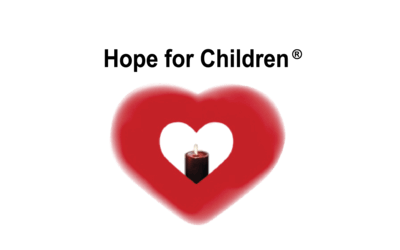“Stranger Danger”
Posted by Patricia on Apr 19th 2018
“Stranger Danger” the Sad Truth
Children are More Likely to be Victimized by Family Members or Acquaintances!
Although we warn our children of “stranger danger” the sad truth is children are more likely to be victimized by family members or acquaintances than they are by strangers.

Psychological Effects of “Stranger Danger”
The child victim may experience significant psychological effects of such crime including depression, anxiety, insomnia, nightmares, eating disorders, phobias, dissociation, obsessive-compulsive disorder, and post-traumatic stress disorder, as well as psychosomatic symptoms such as headaches and gastrointestinal pain.
Frightened Children
Frequently, children who are abused are not identified as victims during childhood. Children may be too frightened to report their abuse, particularly if the perpetrator is a family member. The child may have been silenced, either with threats of violence or by appealing to the child’s loyalty or affection.
Personal Boundaries
The experience of victimization is frequently amplified by the sense of betrayal that accompanies it, particularly when the perpetrator is a family member or other trusted adult. The child grows to adulthood with confused ideas regarding personal boundaries and what constitutes a healthy relationship. Because of a history of abuse, many individuals are vulnerable to re-victimization. They may lack the capacity to distinguish safe from unsafe persons, environments, and situations. Their vulnerability may actually attract predators.
Child Sexual Abuse Statistics
The prevalence of child sexual abuse is difficult to determine because it is often not reported; experts agree that the incidence is far greater than what is reported to authorities. CSA is also not uniformly defined, so statistics may vary. Statistics below represent some of the research done on child sexual abuse.
The U.S. Department of Health and Human Services’ Children’s Bureau report Child Maltreatment 2010 found that 9.2% of victimized children were sexually assaulted (page 24).
Studies by David Finkelhor, Director of the Crimes Against Children Research Center, show that:
- 1 in 5 girls and 1 in 20 boys is a victim of child sexual abuse;
- Self-report studies show that 20% of adult females and 5-10% of adult males recall a childhood sexual assault or sexual abuse incident;
- During a one-year period in the U.S., 16% of youth ages 14 to 17 had been sexually victimized;
- Over the course of their lifetime, 28% of U.S. youth ages 14 to 17 had been sexually victimized;
- Children are most vulnerable to CSA between the ages of 7 and 13.
According To:
A 2003 National Institute of Justice report, 3 out of 4 adolescents who have been sexually assaulted were victimized by someone they knew well (page 5).
A Bureau of Justice Statistics report shows 1.6 % (sixteen out of one thousand) of children between the ages of 12-17 were victims of rape/sexual assault (page 18).
A study conducted in 1986 found that 63% of women who had suffered sexual abuse by a family member also reported a rape or attempted rape after the age of 14. Recent studies in 2000, 2002, and 2005 have all concluded similar results.
Children who had an experience of rape or attempted rape in their adolescent years were 13.7 times more likely to experience rape or attempted rape in their first year of college.
A child who is the victim of prolonged sexual abuse usually develops low self-esteem, a feeling of worthlessness and an abnormal or distorted view of sex. The child may become withdrawn and mistrustful of adults, and can become suicidal.
Children who do not live with both parents as well as children living in homes marked by parental discord, divorce, or domestic violence, have a higher risk of being sexually abused.
In the vast majority of cases where there is credible evidence that a child has been penetrated, only between 5 and 15% of those children will have genital injuries consistent with sexual abuse.
Child sexual abuse is not solely restricted to physical contact; such abuse could include non-contact abuse, such as exposure, voyeurism, and child pornography (page 1).
Compared to those with no history of sexual abuse, young males who were sexually abused were five times more likely to cause teen pregnancy, three times more likely to have multiple sexual partners and two times more likely to have unprotected sex, according to the study published online and in the June print issue of the Journal of Adolescent Health .
Made available through the Web site of https://hopeforchildrenfoundation.org/

